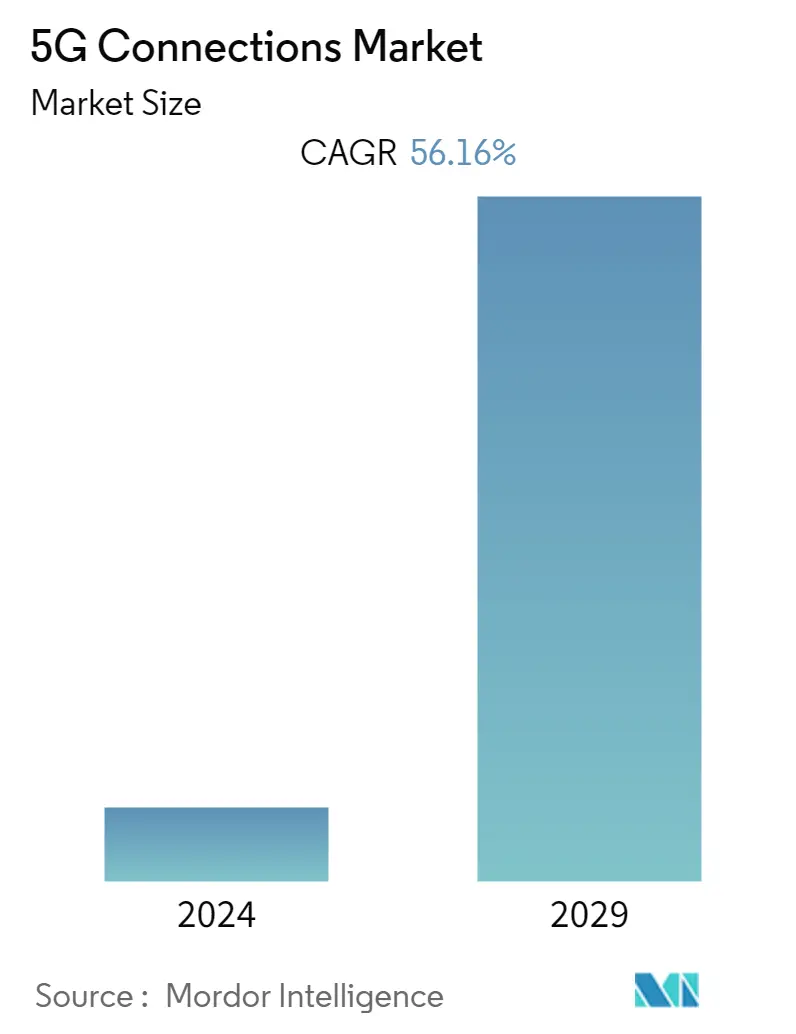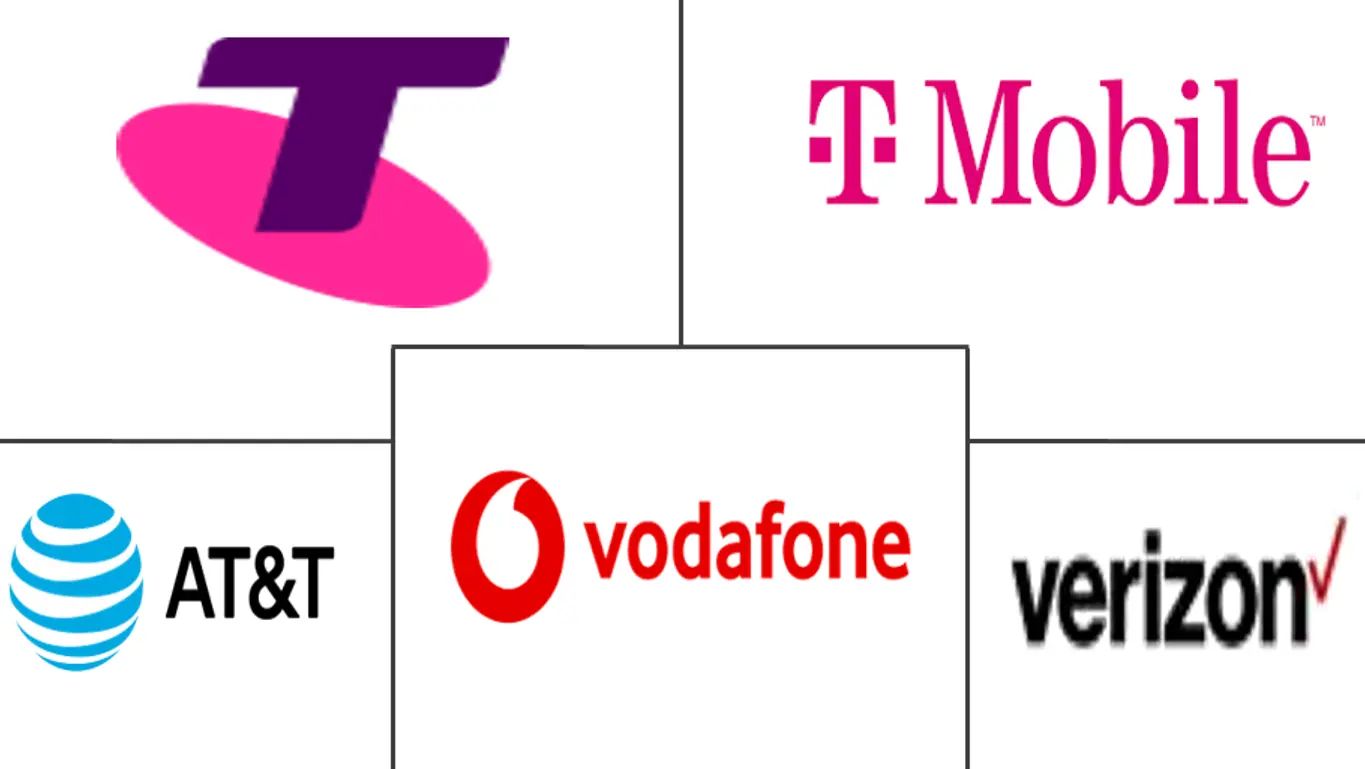Market Size of 5G Connections Industry

| Study Period | 2019 - 2029 |
| Base Year For Estimation | 2023 |
| CAGR | 56.16 % |
| Fastest Growing Market | Asia Pacific |
| Largest Market | North America |
| Market Concentration | Low |
Major Players
*Disclaimer: Major Players sorted in no particular order |
Need a report that reflects how COVID-19 has impacted this market and its growth?
5G Connections Market Analysis
The 5G Connections Market size is estimated at USD 106.64 billion in 2023, and is expected to reach USD 990.33 billion by 2028, growing at a CAGR of 56.16% during the forecast period (2023-2028).
According to Ericsson data, with the addition of 136 million 5G subscribers in the last quarter of 2022, Global 5G subscriptions reached the one billion milestone. 5G is expanding faster than its predecessors in the mobile generation. Ericsson further claims, by 2027, about three-quarters of the world's population will be able to access 5G.
- Robust infrastructure like fiberizing the towers will accelerate the 5G expansion across the world. Fiber-rich network infrastructure can support features like increased speeds with lower attenuation, immunity to electromagnetic interference, small size, and virtually unlimited bandwidth potential. Without fiber optics, 5G will have limited performance, so Telcos are investing in laying these fibers for further expansion.AT&T partnered with the private equity company BlackRock Alternatives for a project called Gigapower to provide a wholesale fiber network across the U.S. Initially, the fiber network will be installed in 1.5 million customer locations.
- The adoption of IoT in various businesses will drive 5G. Emerging smart city projects or Intelligent Transport Systems (ITS) are cases that require the amalgamation of IoT and 5G. 5G is being used with autonomous vehicles in mining to provide safety measures for workers. The low latency of 5G helps in making quick real-time decisions. This means cameras or sensors can be mounted on vehicles to notify workers of potential collisions and accidents while they work in mines.
- Increasing demand for cloud data or applications that use massive amounts of data to provide actionable insights will also require 5G. The high speeds and low latency of 5G can stream endless waves of data to a central cloud server, where IoT devices on the network edge can make efficient decisions. For instance, streaming patient health data from a moving ambulance to a hospital will be easy with 5G services.
- The Covid-19 pandemic was the most important time for 5G as a revolutionary technology. Many applications were tested based on the integration of 5G in combination with other digital technologies. During COVID-19, 5G was the most effective tool for supporting medical diagnosis and treatment; the trend is still present today. For instance, The healthcare sector most benefited from using 5G since the network's high capacity and low latency enable the transmission of high-definition footage for processing and analytics. This tool will assist in identifying patients who are acting differently than usual, have experienced an incident like a fall, or are becoming a danger to themselves or others.
- Implementation of 5G technology involves high costs. Utilizing mm-Wave frequencies, rolling out large-scale fiber optic cables, and lacking skilled labor involves high cost. Every 5G technology implementation step are challenging for most Communication Service Providers (CSPs).
